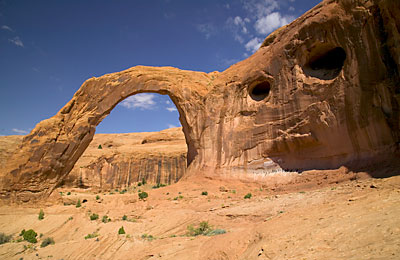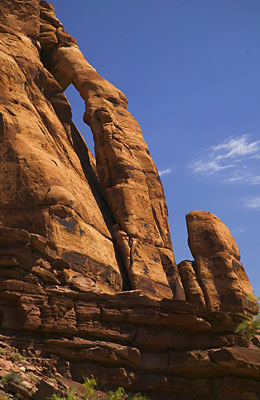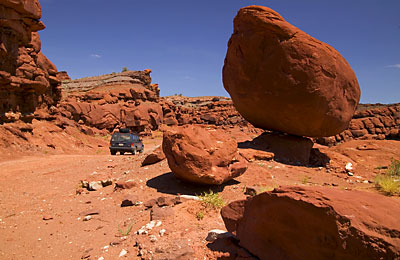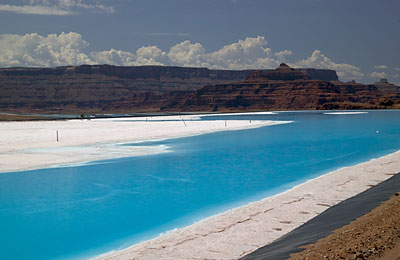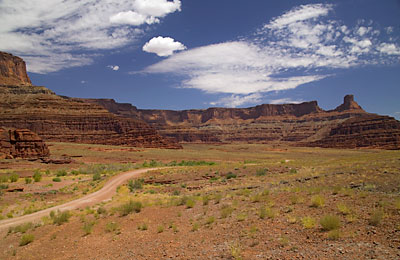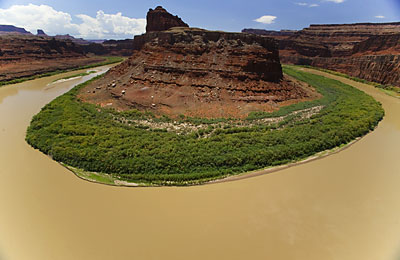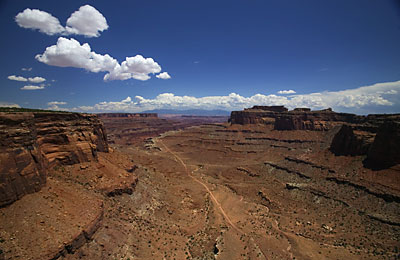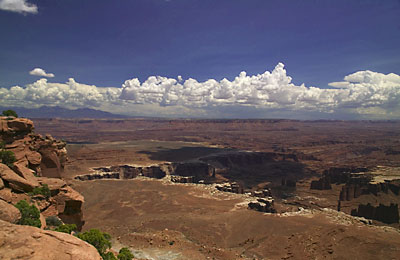Ken's Journal
No. 4 - Summer 2004
Canyonlands and Arches National Parks, Moab UT - 07/21 - 07/25/2004
Days 25-29 on the road. Part III.
Head north out of Moab on US191 and make a right on SR128 just as you reach the Colorado River. SR128 follows the Colorado River and is a very scenic route that will eventually take you all the way to I70. All along this road are primitive campgrounds, fishing access and boat launch facilities on the Colorado. Keep going on US191 and just before the entrance to Arches NP you'll find SR279, mainly serving a potash mine and after that, the beginning of a number of back roads trails. You'll also find a number of day-hikes off SR279. One of the nicest day-hikes is the trail to Corona Arch, a picturesque arch only 1.5 miles from the trailhead. This hike involves a climb of 440 feet and is not for anyone who fears heights as you are right on the edge of serious drop-offs in many places.
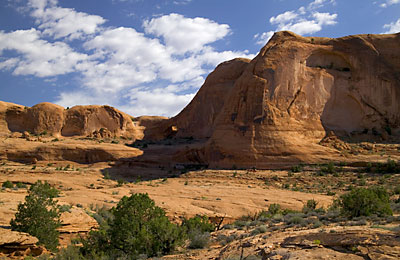
After a 400' climb out of the canyon, this is the scene that faces you. Notice the small arch near the center of the photo. This is an un-named arch. It's yours! You can name it whatever you want!!
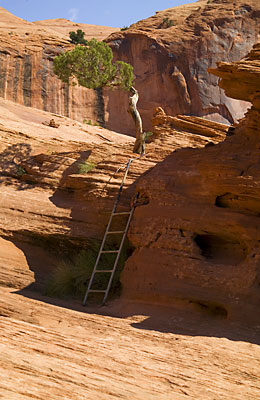
After following cairns for almost a mile and following the base of a cliff for a while, you'll find a safety cable pegged into the rock to keep you from slipping over the edge - the slickrock is steeply pitched in this area. Then you'll come to a cable alongside some steps cut into the slickrock. At the top of this climb, you'll find the ladder shown above. At the top of the ladder, you'll finally see Corona Arch.

